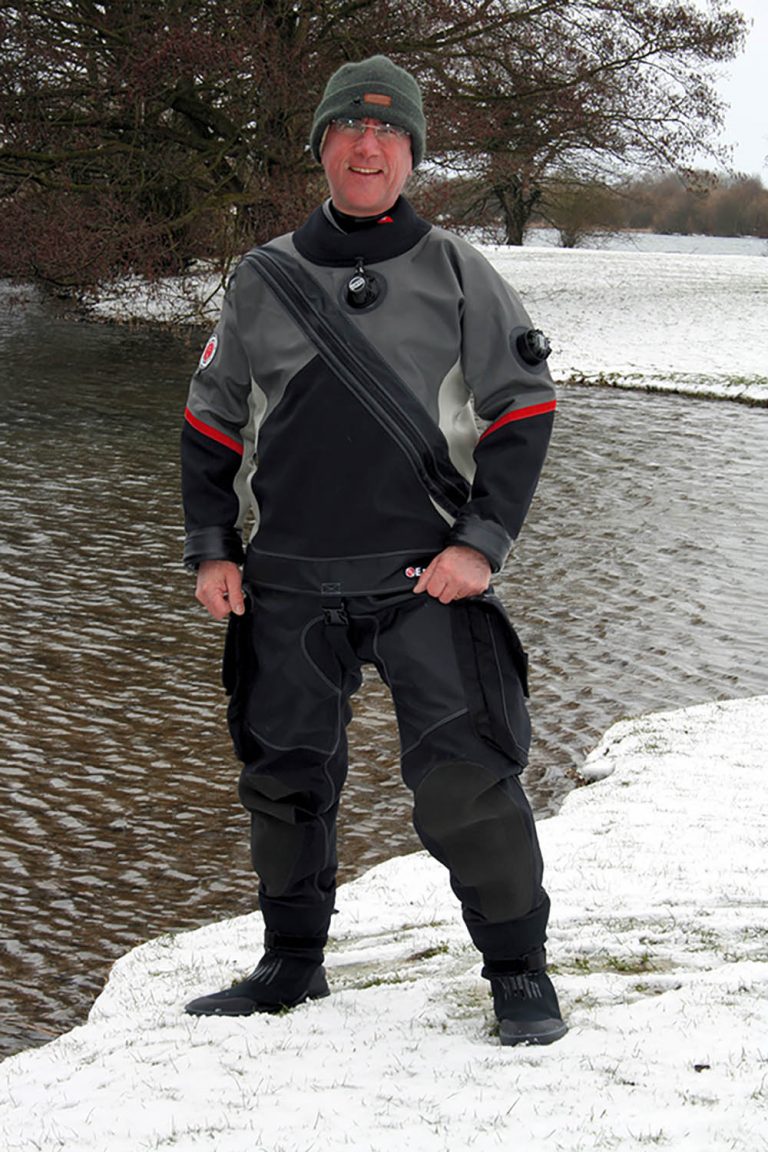- 1) DIVER TESTS EXTRA
- 2) Seaskin Ultra 3.6kg, £426
- 3) SEAC WarmDry – 3.6kg, £625
- 4) Northern Diver Divemaster – 4.4kg, £695
- 5) Otter Hammerhead – 4.2kg, £745
- 6) Robin Hood Watersports X-Flex – 3.6kg, £759
- 7) BARE Aquatrek – 2.6kg, £945
- 8) O’Three MSF500 – 4.8kg, £950
- 9) Scubapro Definition – 3.8kg, £989
- 10) Santi E.Motion Plus – 4.2kg, £1500
- 11) Drysuits: Summary & Comparison
DIVER TESTS EXTRA
‘Send us your best drysuit for an enthusiastic general diver!’ suggested MIKE WARD, and nine confident manufacturers responded. Here’s how their products, which range from just over £400 to £1500, compared when he took them under water in suitably cool conditions.
Appeared in DIVER May 2018
DIVE IN COLD WATER and your drysuit is your bestie. What’s cold water? For me, if there’s repetitive diving involved it means low 20°Cs and down – year-round in the UK or somewhere like Egypt in winter and spring.
True, rock up on a Red Sea liveaboard and unpack your drysuit and someone will be on your case about being soft, but give it a few days of four dives a day and all the wind chill they can take, and you’ll be putting the boot back in with the other foot.
Also read: Latest Hammond suited to travelling divers
But here’s something remarkable. A few years ago I got a new suit and took it to the Red Sea in March, then Newfoundland in April. The water in the Red Sea was 22°C, in Newfie it was -2°C, yet I was good on both trips in the same suit. Magic.
How does that work? Think of your drysuit as a tailored bag of air covering your body, with watertight seals around your neck and wrists, so only your head and hands are in direct contact with the water.
Air being a poor conductor, loss of body heat is slowed. You stay warmer for longer and can dive in water that would otherwise introduce you to the joys of hypothermia and hospital food.
However, you need something to control that air and ensure that it stays as a nice even layer. A thick undersuit traps more air than a thin one and keeps you warmer in colder water, though good choice of material helps with this.
So your drysuit keeps you dry and you pick the undersuit to match water temperature. In the Red Sea I wore a T-shirt and shorts; in Newfoundland a Thinsulate, thermal wossnames, a vest and
I can’t remember what else.
I just wish I’d also had dry gloves. I ended that trip with frostbitten fingertips, but at least my hood kept my ears warm. Your head loses a disproportionate amount of heat, so a decent hood is vital in cold water.
Seals
Neck- and wrist-seals come in two materials, latex and neoprene, and need to be tight enough to seal yet flexible enough to allow you to move comfortably.
Latex seals are thin cones that typically make contact with your flesh over only a short length, so the wrist-seals in particular can gap away if the tendons on the inside of your wrists are pronounced.
Neoprene seals are far longer and thicker, and the neck-seals must be folded inward to seal properly.
Latex is better at keeping you dry but doesn’t last as long as neoprene seals, and when latex rips your diving is over until a new seal is fitted.
Neoprene will be as dry as latex to start with, but over time will stretch a bit, and you’ll find your undersuit a bit damp around the wrists and neck at the end of dives, or so I’ve found.
It’s easier to get into your suit if you lubricate the seals with unscented talc first, and easier to get out if you lube the wrist-seals with something slippery. Divers I know use washing-up liquid or KY jelly, available online if you’re shy, but I live in a farming community and use veterinary lube.
With the benefits of dryness and insulation comes the drawback of controlling the air in your suit.
Go deep enough in the water and the pressure will squeeze your suit tight enough to cause bruising, and even stop you moving your arms and legs – not good.
However, all drysuits have an inflation-valve on the chest where you can reach it with either hand. A nice big, easy-to-press button you can operate with thick gloves and numb hands allows you to add enough gas to remove the squeeze.
On ascent, the added air expands and needs venting off. The out-valve is usually on the upper left arm if it’s an auto-dump, or on the left forearm on a suit with a wrist-dump. As you rise you roll left shoulder high, or lift your arm to dump gas.
Which is best? Bananas and oranges, though I do have a preference. Most divers think I’m wrong, but each suit sent for this test had an auto-dump on the shoulder.
If you can control the amount of air in your suit you can control your buoyancy using your suit as easily as using your BC. That grating noise you heard was a can of worms being opened, so we’ll move on quickly from that debate.
Materials
Drysuits can be made from neoprene or membrane materials. Ordinary 8mm neoprene is foam-like, with lots of air bubbles and its own warming effect.
When you dive, however, you’ll need a bit more lead to get that extra air under water, and as the material compresses you lose both warmth and buoyancy.
The effect isn’t huge, but it’s there, so many suit-makers now use precompressed or crushed neoprene that either reduces the effect or turns neoprene into a membrane material.
Neoprene tends to be stretchier than membrane materials, and so a bit comfier to wear above as well as below water, but clever tailoring can all but eliminate even this difference.
Wreckies often prefer neoprene as it’s less likely to tear if you get snagged, but a glance on UK dive-boats is likely to show an even spread of neoprene and membrane suits.
I prefer traditional boots rather than socks and have never had an issue with the soles wearing, though I might if I did more shore-diving.
Buying tips
The first rule when buying a suit is to try it with the undersuit you intend to use. Take your thickest undersuit and be aware that in summer you may need to take a little more care with adding and venting gas.
Open the suit zip, sort out any internal braces and put your feet in the boots. The suit should pull up easily, but not too easily, and you may need to wiggle your backside a bit to get it over your hips.
Keep pulling up until the suit’s crotch meets yours, put on any braces, insert your arms, push your head through the neck-seal, inverting it if it’s neoprene, and zip up.
If it’s a back zip you’ll need help, and if the suit has a telescopic torso you’ll then need to pull the top down evenly and clip the crotch-strap into place.
Wriggle your shoulders, legs and head and stretch up and down a bit to settle the suit in place, then pull the neck-seal away from your neck and squat down to expel as much air as possible. Allow the neck-seal to fall back into place and stand up.
Comfy? Can you reach across and cup your opposite shoulder with either hand? Can you bend your knees far enough to easily put on a pair of fins? Can you put your hands behind your head and twist your body from side to side?
Does the suit fit snugly without excess material in legs or torso? Are the legs not too long or short? Is the suit too tight anywhere? Walk around, crouch again, try on a BC, reach your arms out as far as they’ll go, do a bit of moonwalking, ask passers-by if they think the suit fits, look in the mirror, anything you like.
Remember, on a typical diving day you can wear your suit for up to eight hours at a stretch, mostly above water, and will probably keep it for years to come, so it needs to be right.
And be reassured that no decent suit-maker or retailer will let you out with a suit that doesn’t fit.
The test
I asked a broad range of suit-makers to send me what they felt was their best suit for an enthusiastic general diver. The sort of diver who used to be the backbone of clubs – in the water year-round, doing some boat-handling, some teaching, and diving in a dustbin as a last resort.
I pored over each suit to look at seam quality, regularity of panel-cut and more, trying to find faults.
I tried the suits dry before taking each one diving over a three-week period. In-water conditions were consistent – almost zero vis and 4°C.
I made sure I could reach dump-valve and fins easily, did some rolls, went fully inverted, and tried various arm positions in my usual horizontal trim. A buoyancy-control exercise showed how well the suits dumped gas on ascent – it was all about performance. Here is how they came across – in ascending price order…
Seaskin Ultra 3.6kg, £426

They are also very reasonably priced.

The compressed-neoprene Ultra is a conventional back-zip drysuit with an auto dump on the shoulder, an inflation-valve on the centre of the chest and one optional extra, a convenience zip.
It comes in a soft, waterproof kit-bag with an inflation-hose and a small plastic bag containing a bottle of unscented talc and a block of zip wax. The hood is optional.
Subtle logo above the Apeks valve.First impressions were good: the suit was well-made, with neat stitching, and looked and felt hard-wearing. The reinforcing panels over the knees are glued on, and are not as mimsy as they look.
The suit came with Apeks valves, neoprene wrist-seals and a latex neck-seal, which offers no thermal protection, but a neoprene collar over the base offers some additional warmth.
If you have the flexibility and patience, or a willing buddy, you could also tuck the skirt of your hood under the collar.
Donning was easy. The zip, backed by a generous neoprene flap to protect your undersuit and eliminate a cold spot across your upper back, unzips to offer a large, easy-to-climb-into opening, and the suit pulled easily up and over my hips.
A generous dusting of talc made the seals glide smoothly and settle into place comfortably.
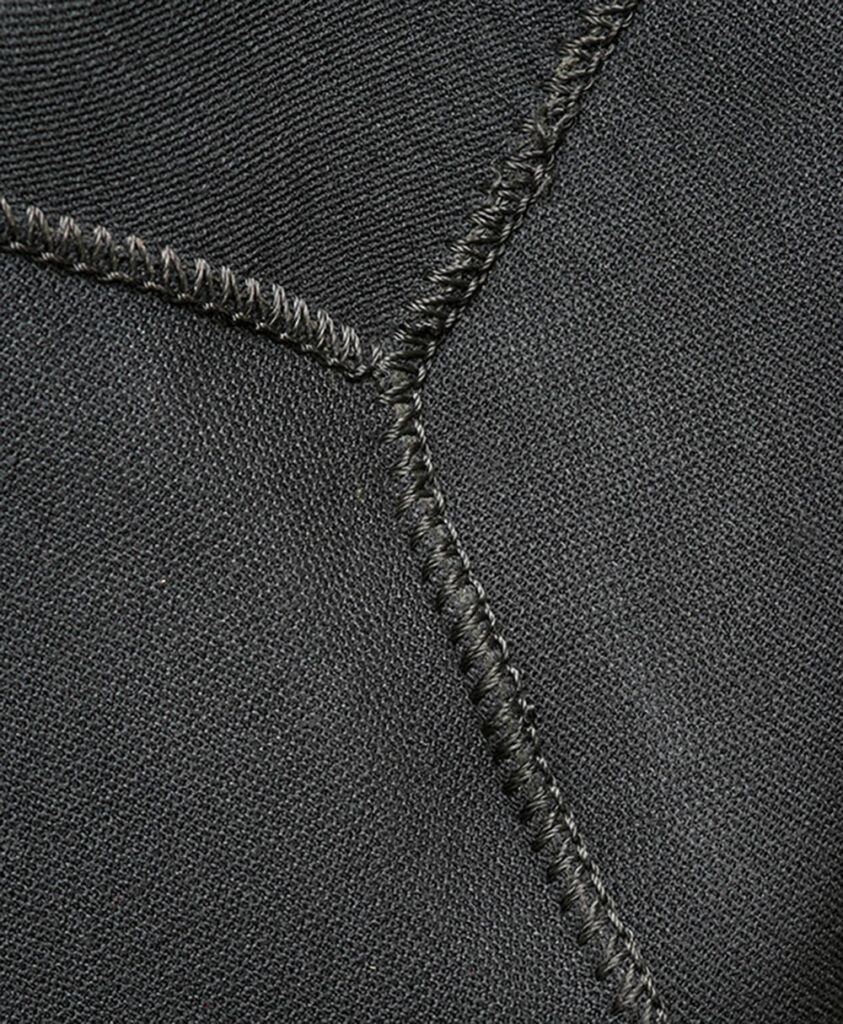
The standard zip closed easily once lubed, though you’ll need a buddy to shut it for you as with any rear-fitted zip, even with the inner flap smoothed carefully into place.
The loop on the end is long enough for you to reach across and make sure that the zip is fully closed.
The suit moulded to my contours and was plenty comfortable for a full diving day. Some stretch made fin-fitting straightforward, and I had plenty of movement to reach the left shoulder-dump. My test is always that once in the water I can forget the kit and get on with the dive, and the suit fell into this category.
Exiting the suit was again easy, though some lube helped with the wrist-seals, as it always does. I was both dry and comfortable.
Website: Sea Skin
SEAC WarmDry – 3.6kg, £625
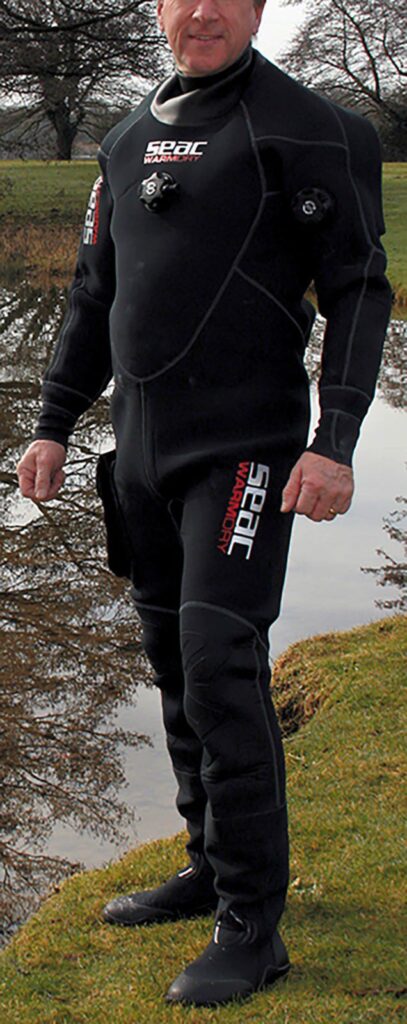
It came in a large drawstring bag with a hood and an inflation-hose, and its build quality looked excellent. SEAC has developed its own panel-cut and fit, and the joins were neatly done – the sort of finish that suggests that your new suit will have a long future.

The WarmDry is made of compressed neoprene with a warm lining and a neoprene neck-seal.
The back-zip has a decent inner flap to protect your undersuit but a very narrow outer flap to cover the zip when the suit is being worn, with nothing to hold the outer flap in place over the zip.
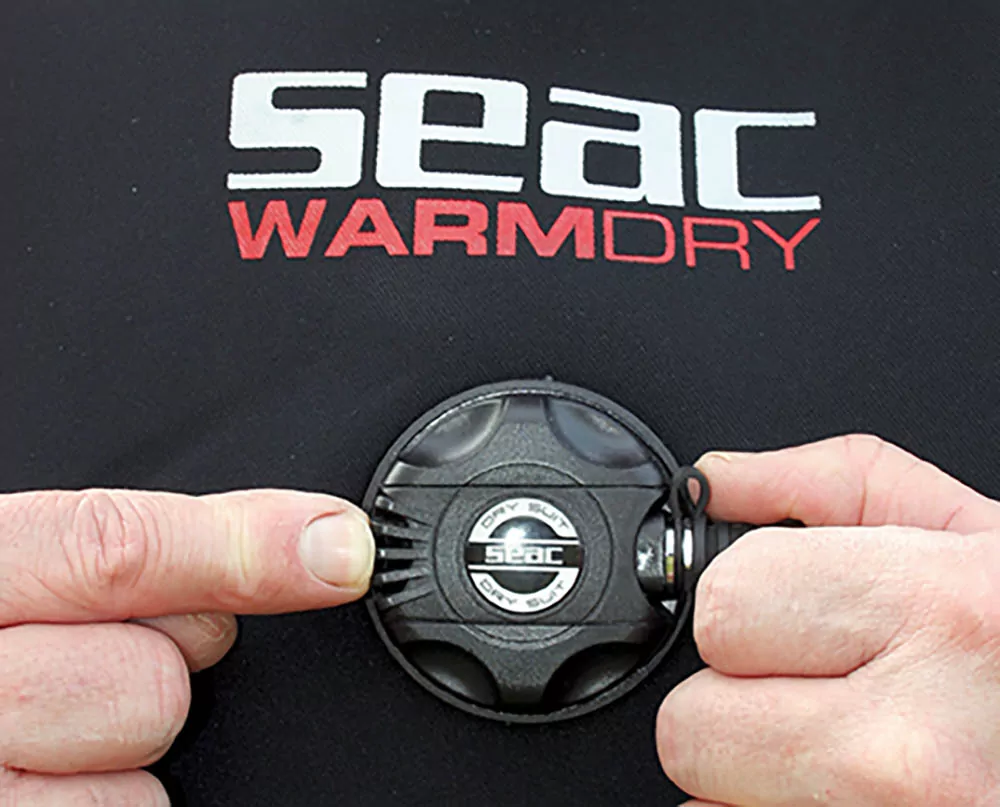
The dump-valve on the upper left arm is SEAC-branded, quite small and mounted a little further to the front of your arm than on other suits. The shoulder tops are textured to hold your kit securely and the sleeves taper smoothly to neoprene wrist-seals. The inflation-valve needs a side-to-side squeeze to operate.
A bellows-type cargo-pocket is situated on the right hip, closed by a large flap over the top held shut with Velcro. The bit of the suit enclosing your bum is textured so that you don’t slip when you sit.
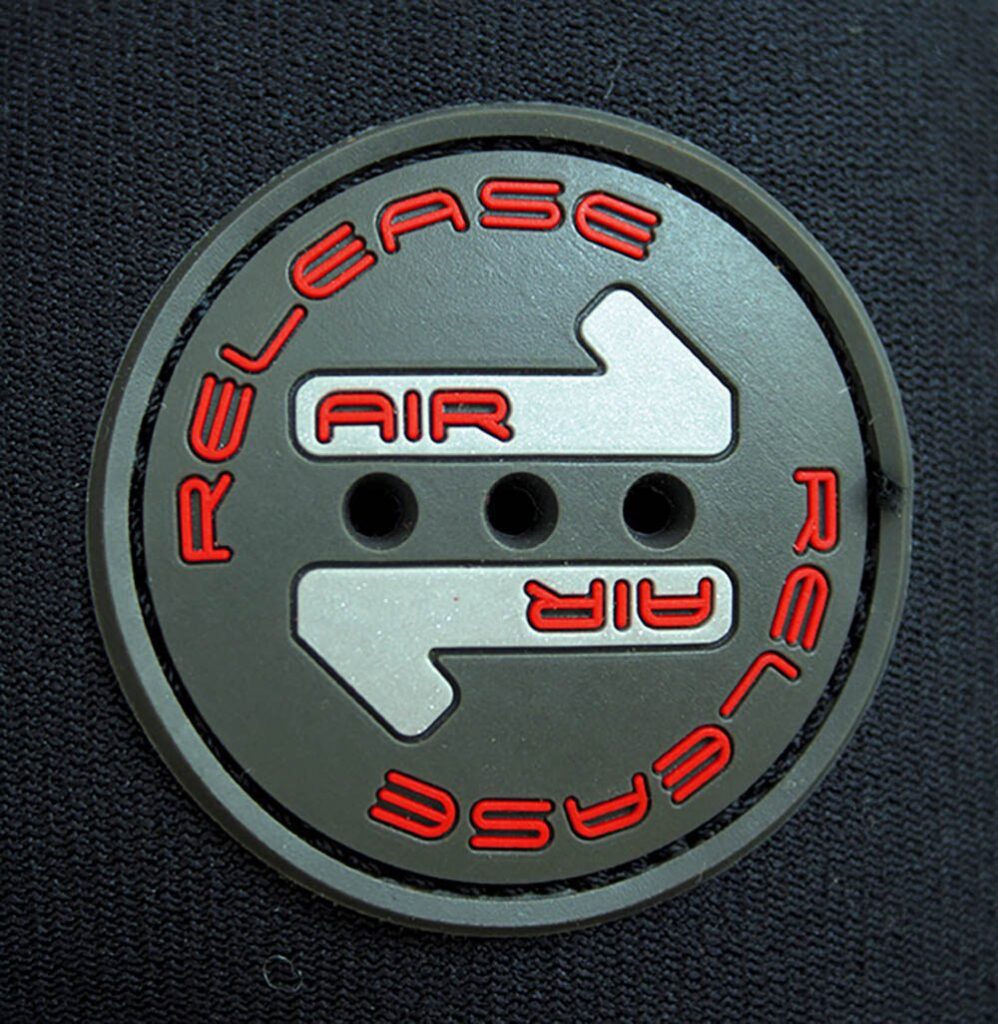
The knee-pads are embossed with a fish-shape pattern, but you would need to look closely to see that because they are, inevitably, black on black. The legs finish in standard drysuit boots.
The WarmDry is my kind of diving equipment – simple, straightforward and well-made. Putting it on is a pleasure.
You undo the zip and slide in from the top, not forgetting to move the internal braces out of the way. A gentle twerk settles the bottom half, and you’re soon ready to go.
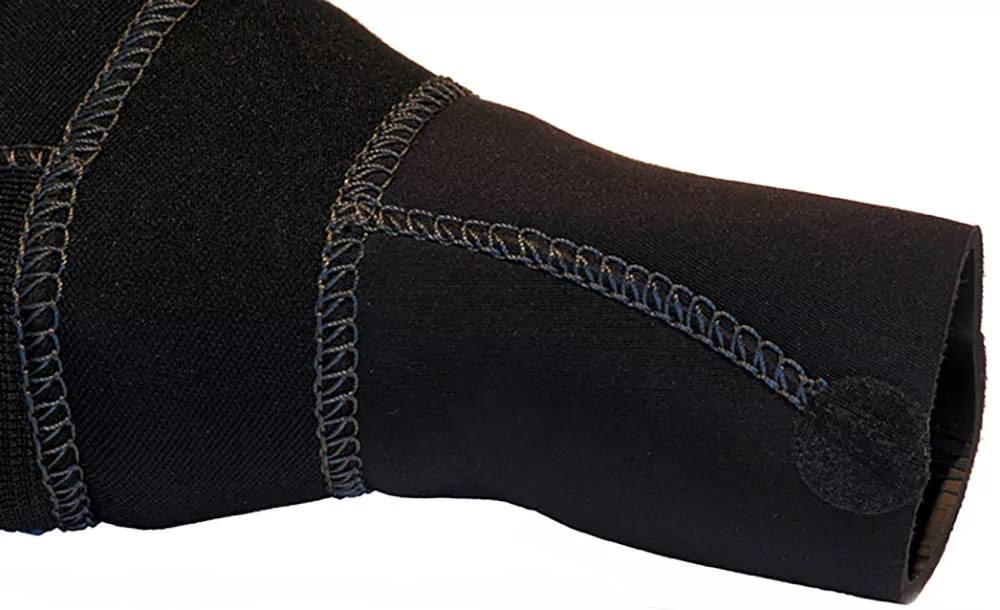
At which point I noticed that my significant other, who had so far been watching me try on drysuits with total indifference, was now staring at me open-mouthed. “Coo, well sexy!” she said. I knew that no good would come of her reading all those Fifty Shades books. I suppose it’s that Italian style thing.
Back in the real world, the suit was dry, comfortable and all-round lovely to wear and use.
Website: SEAC Sub
Northern Diver Divemaster – 4.4kg, £695
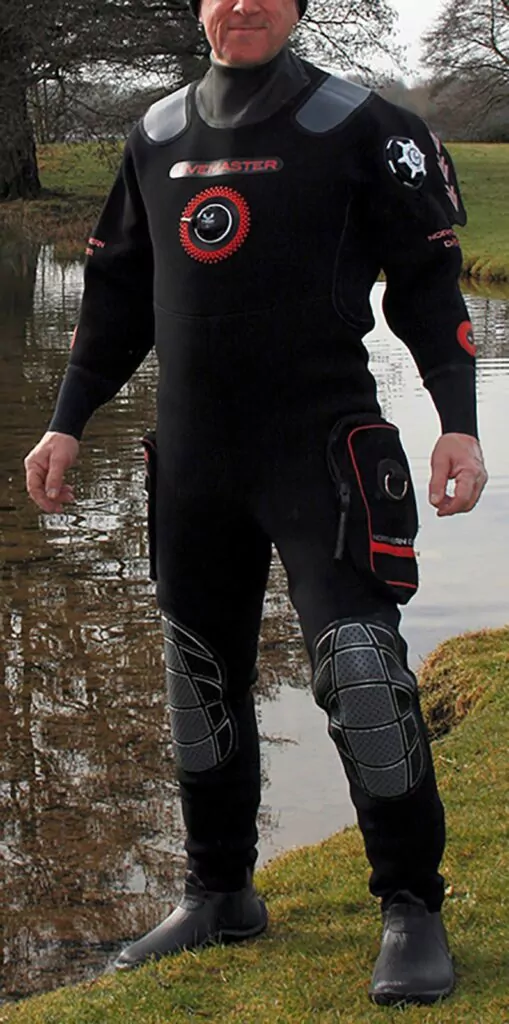
Northern Diver is one of the northern powerhouse of drysuit-makers, hailing from Wigan. It has been going for a long time and supplies commercial, forces and emergency services as well as sports divers, for whom it has suits at various price-points. Climb aboard any UK dive-boat and you’re likely to see an ND suit.

It sent me the latest incarnation of its Divemaster, which it said is the 2018 version of the suit in which I started diving 30 years ago. It is, but those 30 years have seen lots of changes.
The suit came in a box with a nicely fitted hood and an inflation hose for the ND-branded valves, plus a carry-bag that unzips to form a changing-mat.
The Divemaster is a simple suit, mostly black and made of compressed neoprene stitched and glued with tape reinforcement around the under-arm patches. The neck-seal is neoprene, and a leaflet explains how to fit it to keep it waterproof.
Small reinforcing patches cover the tops of the shoulders to protect against rubbing from your kit, and the arms taper neatly to conventional neoprene wrist-seals.
The rear zip has an internal flap to protect your undersuit and a large external flap to protect the zip during the dive.

The standard press-button inflation-valve was easy to find and use even with numbed hands in thick gloves. The exhaust valve, a left-shoulder auto-dump, looked snazzy and is nicely low-profile.
There’s a zipped pocket on the left hip and a Velcro-flap-closed pocket on the right. The left one has a sewn-on D-ring and the right a smaller pocket with a Velcro strap above and “Push” printed under the opening. It’s a knife-pocket.
There are big pads over the knees and conventional drysuit boots. A good little extra is a small drawstring bag containing a first-aid kit. There’s a bottle of seal-lube, a stick of zip-lube and small patches of material to cover any accidental punctures, plus adhesive. It could be a trip-saver.
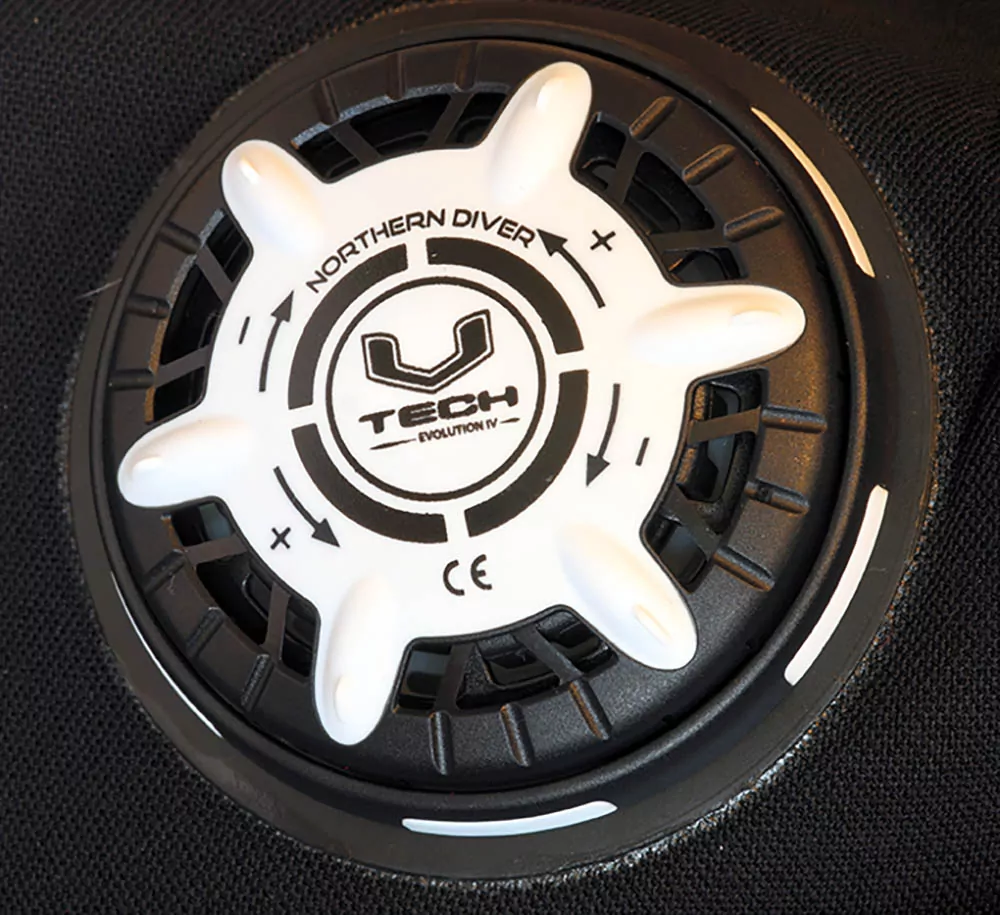
Dry? Yup. Comfy? Ditto. Neoprene has a bit of stretch so you can get a snug fit and still be able to fit your fins, reach your valves and lie around enjoying the sun between dives. If it hadn’t been the coldest winter for 10 years, I would have done that.
Website: Norther Diver
Otter Hammerhead – 4.2kg, £745

Otter is from Yorkshire and has been around a long time (check out the web address below). Its Hammerhead membrane suit arrived in an understated black and royal blue combo – other colours are available. It came in a carrying bag that unzips to form a changing mat and with a hood and inflator-hose.

The workmanship was evident from the first glance at the stitching running neatly down the front – gloriously well done.
The suit has a neoprene neck-seal and a conventional back-mounted zip that has no internal protective flap for your undersuit but does have a protective outer zip-fastened flap to cover the waterproof zip itself.
There’s an Apeks dump-valve on the left shoulder and the arms taper conventionally to heavy-duty latex wrist-seals. The design means that the inflation-valve needs to be mounted off-centre, so it’s situated a bit to the right.
A large cargo-pocket sits on the left hip, with the top closed by a Velcro flap that has a smaller zipped pocket built in that could hold your emergency non-electric car-key. The bottoms of the flaps are weighted and shaped to be easy to grab to open the pockets.
The knees are heavily reinforced, though the pad is integrated into the design and colour of the suit so as not to stand out, and the legs finish in standard drysuit boots.

So far so good, but I’m struggling to find much more to say. It’s a straightforward design, well-made, with no bells and whistles and nothing unnecessary added, which is how I like my diving gear.
I make an exception of the internal braces, which are bright red and fabulous in an end-of-the-pier comedy sort of way.
The suit did the dry thing perfectly, the comfort thing very well and it’s easy both to live and dive with.
Website: Otter Dry Suits
Robin Hood Watersports X-Flex – 3.6kg, £759

RoHo is another of those drysuit-makers clustered in a golden triangle around the Dewsbury, Leeds and Bradford area of West Yorkshire. It has been in the drysuit business for well over 30 years and has a solid local and nationwide following, making suits to meet a range of budgets and preferences.
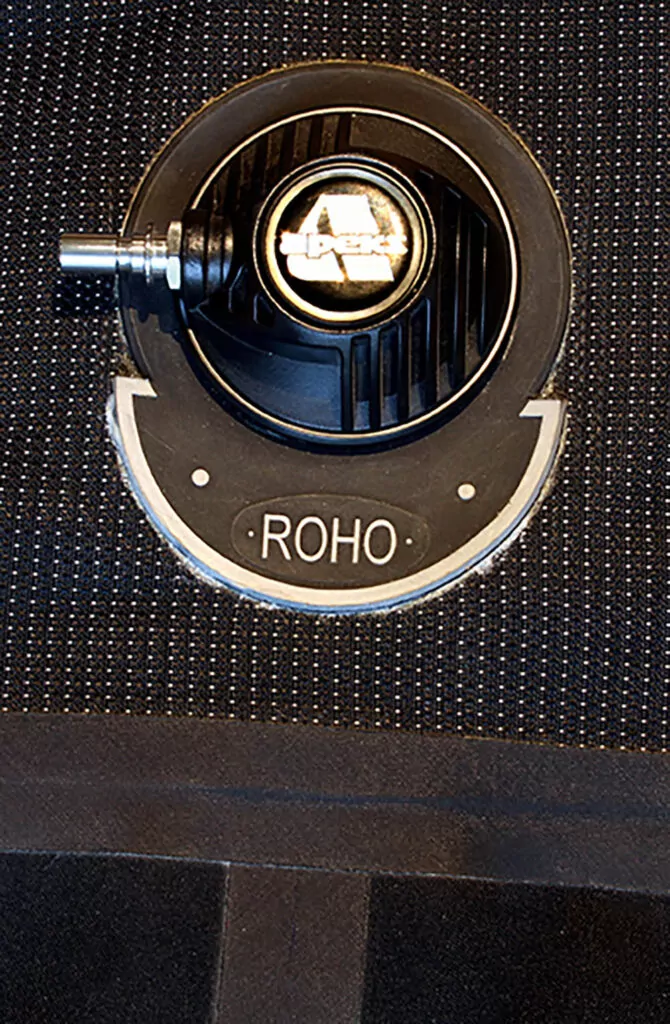
The X-Flex is a straightforward membrane suit and I liked its eye-catching black and golden yellow combination. I’m so used to seeing suits in black with black-on-black logos that anything approaching eye-candy is appreciated.
The material is glued and taped very neatly together throughout. The latex neck-seal has a collar that fastens in place after donning the suit using two large Velcro patches, and each shoulder is reinforced with heavy-duty pads to prevent the BC straps rubbing and damaging your new suit. RoHo has edged both the collar and shoulder-pads with yellow piping.
The material used for the top of the arms, shoulders and torso is of a more textured material than the smoother and more orthodox membrane material used elsewhere. This adds some extra flex for areas of high movement and should improve durability.
The suit comes with a wrist-dump, but a few pounds extra gets you an Apeks auto-dump to complement the Apeks inflation-valve, which comes with an inflation hose.

The back-zip has a large external flap for protection. There’s no internal flap to protect your undersuit but there are braces to hold the bottom of the suit up between dives, and the latex wrist-seals are protected by Velcro adjustable cuffs, another extra-cost option.
The knee-pads, again piped with golden yellow, are hefty and welly style drysuit boots are standard.
Donning the suit is easy through the rear zip, and it works best if you sort the braces out first, then pull the legs up and shuffle your bum into place and pull the braces over your shoulders to hold it there before dealing with the arms and neck-seal.
Don’t forget to open the neck-seal Velcro straps before you try to push your head through, and, more importantly, before you try to get your head out again. That’s all I’m prepared to say.
Dry? Yes, as a bone. Comfortable and flexible? Again, yes. The material feels to have a bit of stretch around the arms but you’ll need to get the fit of this one right for maximum comfort. Visit RoHo for that.
Website: Robin Hood Watersports
BARE Aquatrek – 2.6kg, £945
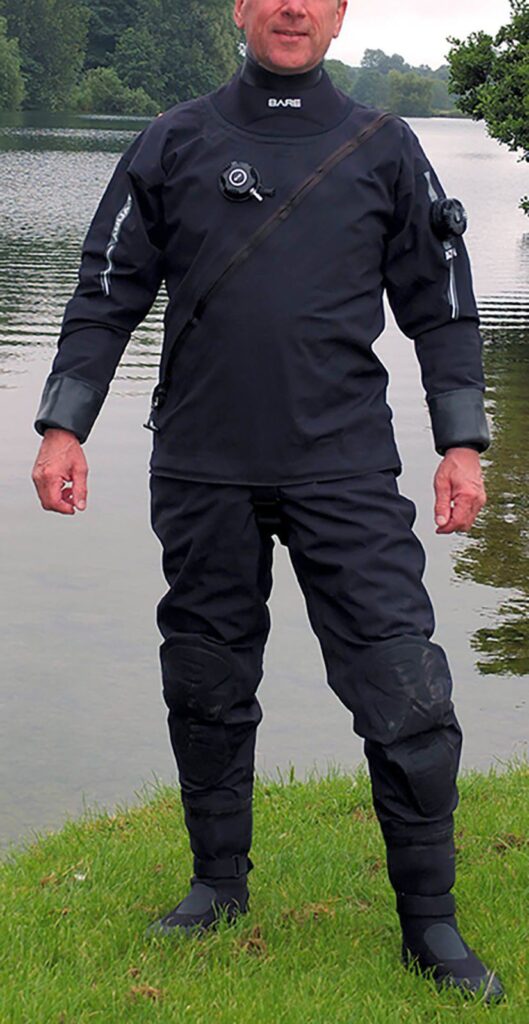
BARE doesn’t seem to have found much favour with UK divers so far – those I know, anyway. It makes a decent range of high-quality suits, but I was pleased to see the Aquatrek singled out for testing, because it is genuinely different.
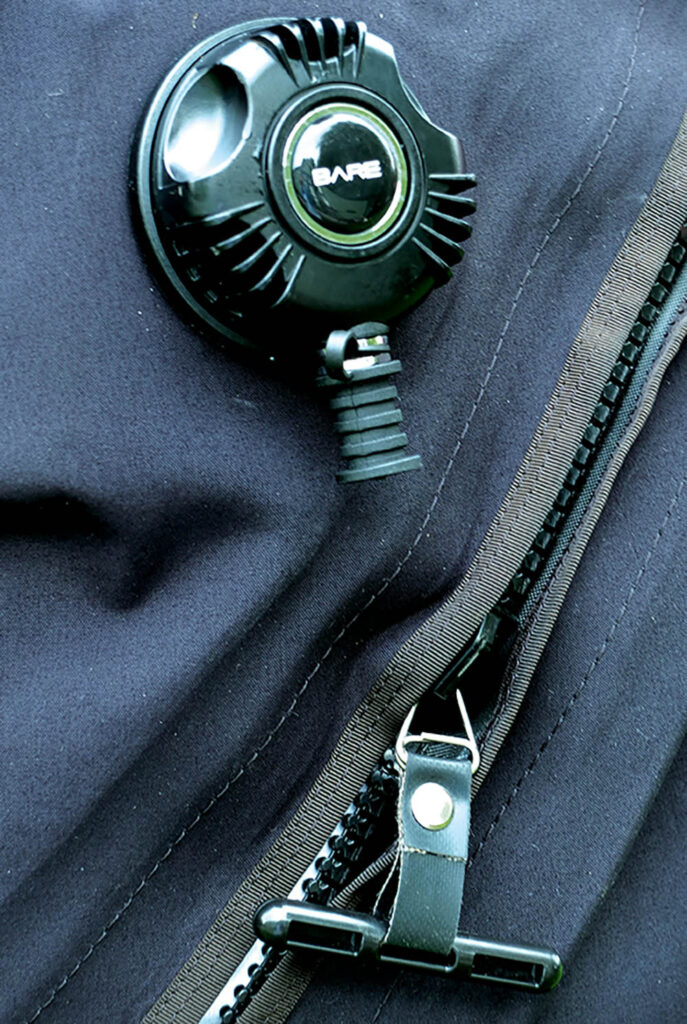
It’s made with lightness front and centre of mind, and the result is a no-brainer for travelling divers.
Build-quality looked good, with regular panel-cut and very neat seams – of course, nothing else is acceptable these days.
The seams are kept as low-profile as possible to make the suit more hydrodynamic.
The neck-seal is neoprene and the front of the suit dominated by a diagonal front zip with a nice T-handle to pull it down and across. It’s a plastic zip rather than the metal one found on other suits in this test – lightweight, you see.
Valves are SiTech auto-dump and SiTech inflate, the latter offset to the right to clear the zip. Knees are protected by good pads embossed with the BARE name and backed by 2mm of neoprene.
This probably adds to the weight, but it does make kneeling on a hard deck so much more comfortable. Ordinary neoprene drysuit boots are standard, and Velcro straps around the ankles keep them firmly in place if you get enthusiastic with the inflate.
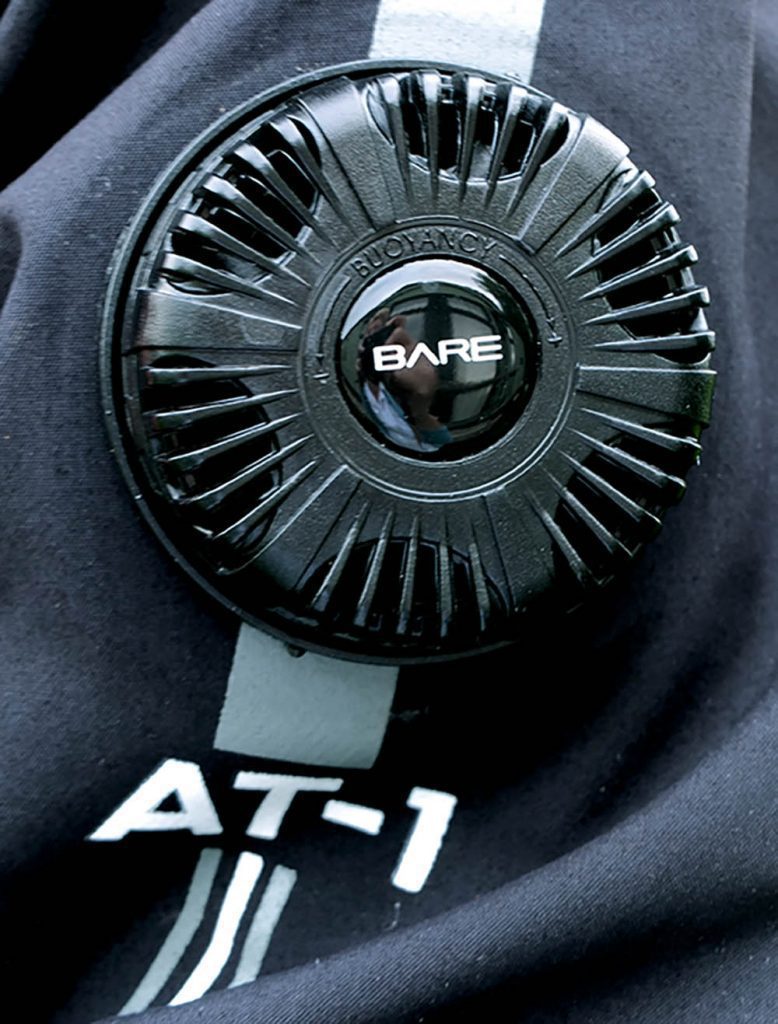
You climb into the suit through the front zip. The over-length torso allows you to flip the top of the suit up behind your head and shove your bonce through the neck-seal with relative ease.
Once you’re in, you tug the top down all round and snug it into place, with a crotch-strap to keep everything neat.
Of all the drysuits I’ve ever tried, the Aquatrek is the easiest to climb into. You do that only once per dive, but that’s welcome.
In the water, neither lightweight build nor ease of donning are any sort of excuse for a product that doesn’t keep you dry and comfy. No trouble there, then – the suit was dry and pleasant to swim in.
Website: Bare Sports
O’Three MSF500 – 4.8kg, £950
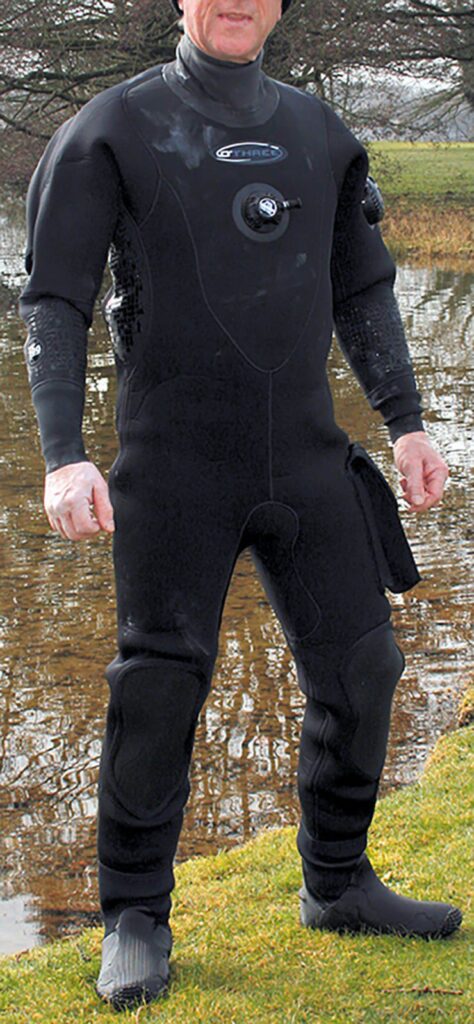
O’Three has an impressive following in the UK, and an enviable reputation for product quality and customer service. Its range covers various price-points, with options to have your new suit made to measure or to bought off the peg and tweaked to fit.

I like the latter idea. I’m lucky, I fit what most suit-makers think of as “male medium”, but I’ve seen plenty of divers who were at the back of the queue for leg-length but got more than their share of torso, and would appreciate a bit of suit-customisation. You can also specify different valves, boots and lots more.
O’Three’s MSF500 Technical Black Flex is a cracker. It comes in a holdall with changing mat, Classic Semi 5mm hood, inflation hose, a kit of talc, zip-lube and a beeswax block, a ring-bound manual, service record and guarantee card, plus a photo of an O’Three-clad diver in the Arctic ice being savaged by a husky that’s signed by Paul Rose (the photo, not the husky).
If first impressions were all that mattered, nobody else would ever sell a drysuit.
The MSF500 uses compressed neoprene, and has a back zip, Apeks valves on shoulder and chest and standard drysuit boots. The zip has a deep internal flap to protect the undersuit and keep you warm, and a Velcro external flap for protection.
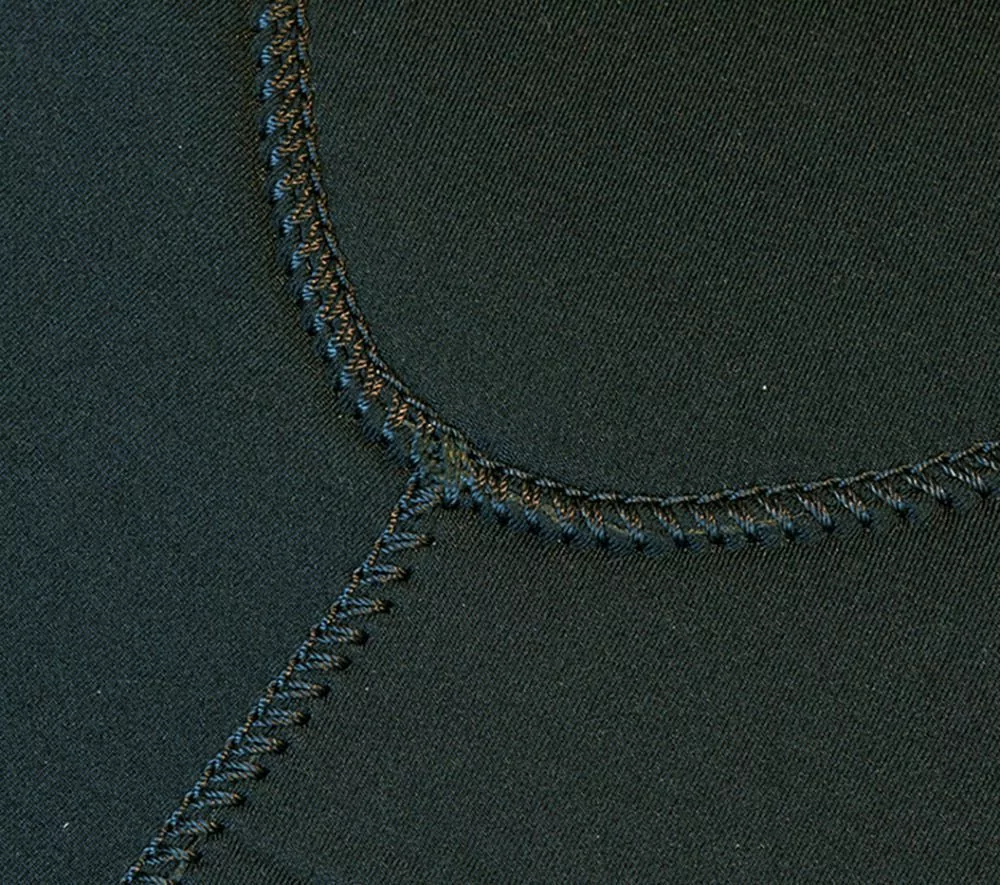
Reinforcement on the under-arm panels and around the forearms will prevent straps rubbing and instruments slipping, and there is a Velcro-closed cargo-pocket on the left thigh. The knees are protected by substantial external panels. Seals are neoprene all-round and the stitching is a work of art. I was impressed.
The zip opened wide for easy entry and my hands and head went smoothly through the respective seals, though the wrist-seals did tend to stop before they were fully in place. A dab of lube helped them settle where they should be.
The seals were tight, but not uncomfortably so, and I like that in a new suit. Neoprene seals give over time, so if they’re loose to start with you’ll be buying new ones before you should.
The suit settled in place comfortably and the slight stretch combined with the good fit ensured that movement was easy and I could reach fins, valves and kit without effort.
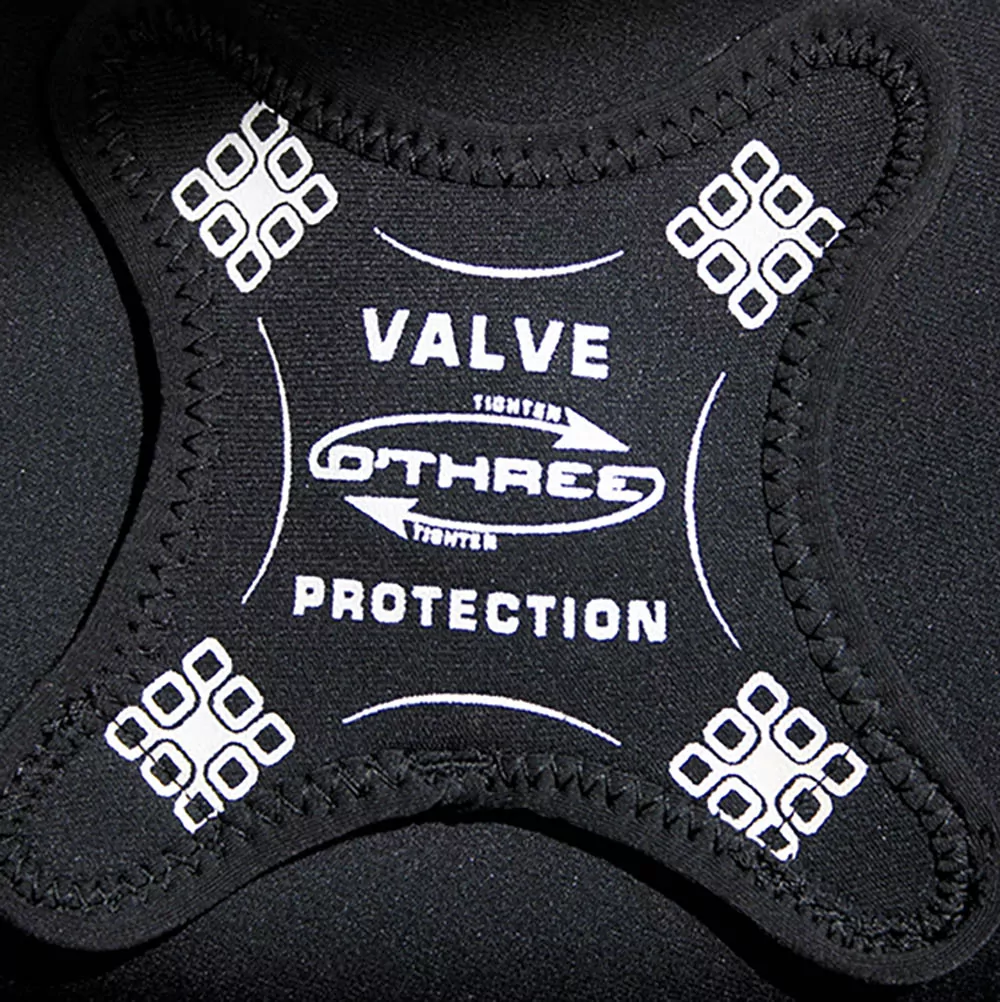
Dry? How dare you even ask? Comfortable? Lovely, and that hood was magnificent. It had smooth internal panels to semi-seal against my face and a vented top. A 7mm version would have been welcome give the water temperature, but the 5mm did the job.
Website: O’Three Drysuits
Scubapro Definition – 3.8kg, £989

Scubapro is one of the most respected names in the diving world, but I’ll confess to thinking of regulators and BCs before suits when its name is mentioned. Perhaps that’s because it’s a US maker and its suits are less often seen on this side of the pond than others.

The Definition membrane has a front zip and latex seals. It comes in a natty bag that opens flat to form a changing mat.
The latex neck-seal has an outer neoprene collar for warmth, with large Velcro patches left and right that you unpeel when you don the suit and fasten back up to hold the collar tight to your neck once you’re in.
Valves are conventionally placed and Scubapro-branded and there’s an inflation-hose in the kit. The inflate needs a sideways squeeze rather than an inward press to operate.
The front-mounted zip runs high-left to right hip. A Velcro flap at the end covers the slider when the zip is closed and an outer zipped flap protects the length of the waterproof zip. Holes in the flap allow water to drain out.
The suit is over-length, with a telescopic torso. You climb in and pull on the bright-blue braces to snug the bottom of the suit into place, then pull the top down all around to form a tuck in the material that’s held in place with a crotch-strap.
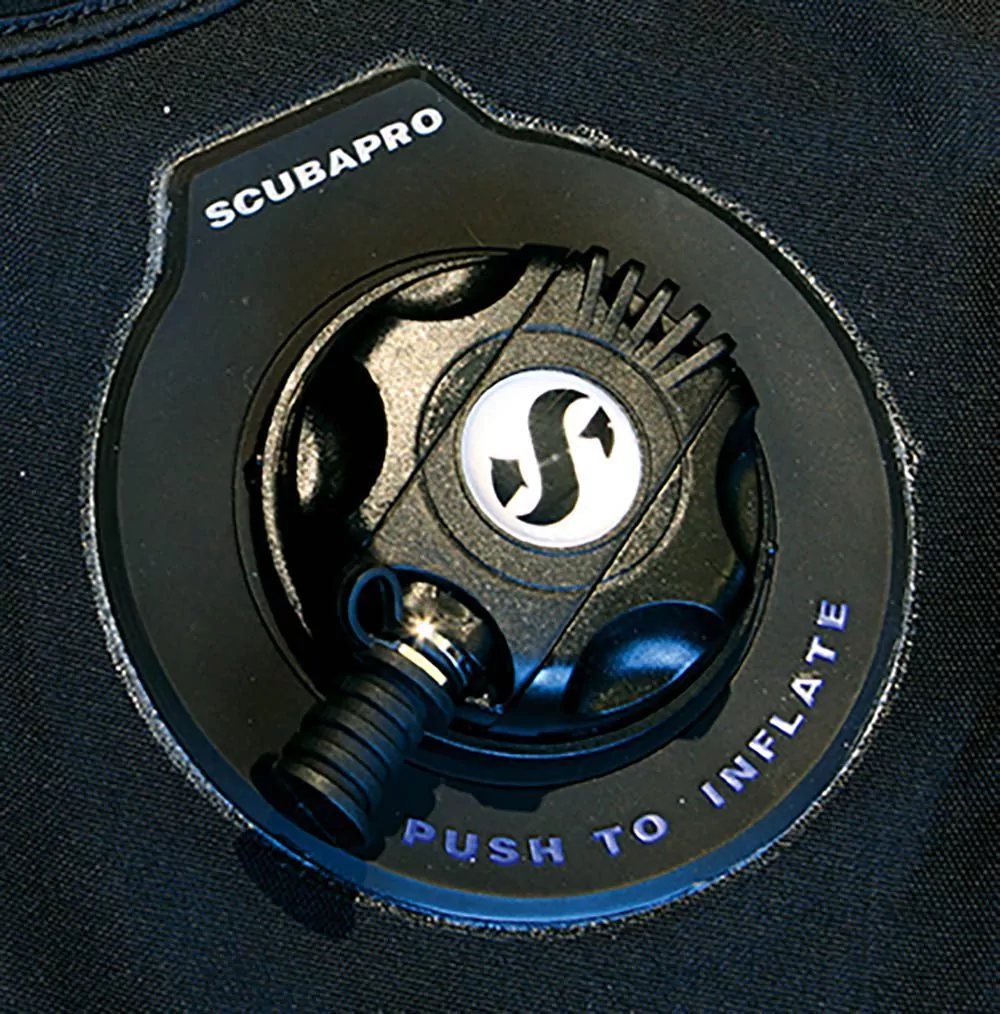
A big pocket on each hip is closed by a Velcro flap that’s actually a smaller zipped pocket over the top, so you get four pockets. There’s a small suicide-clip on the right-hand pocket flap.
Knee-reinforcement panels look to be an integral part of the suit rather than add-ons. A Velcro strap around each ankle should help to hold the boots on if an inversion or inflation issue occurs. The forearms have a loop to keep instruments in place, and each wrist-seal is protected by an outer cuff tightened by a Velcro strap.
The supplied hood has a vent system to allow any stray bubbles that find their way into the hood to escape, smooth neoprene around the face and a small suicide-clip at the back so that you can fasten it to its counterpart on the right pocket between dives.
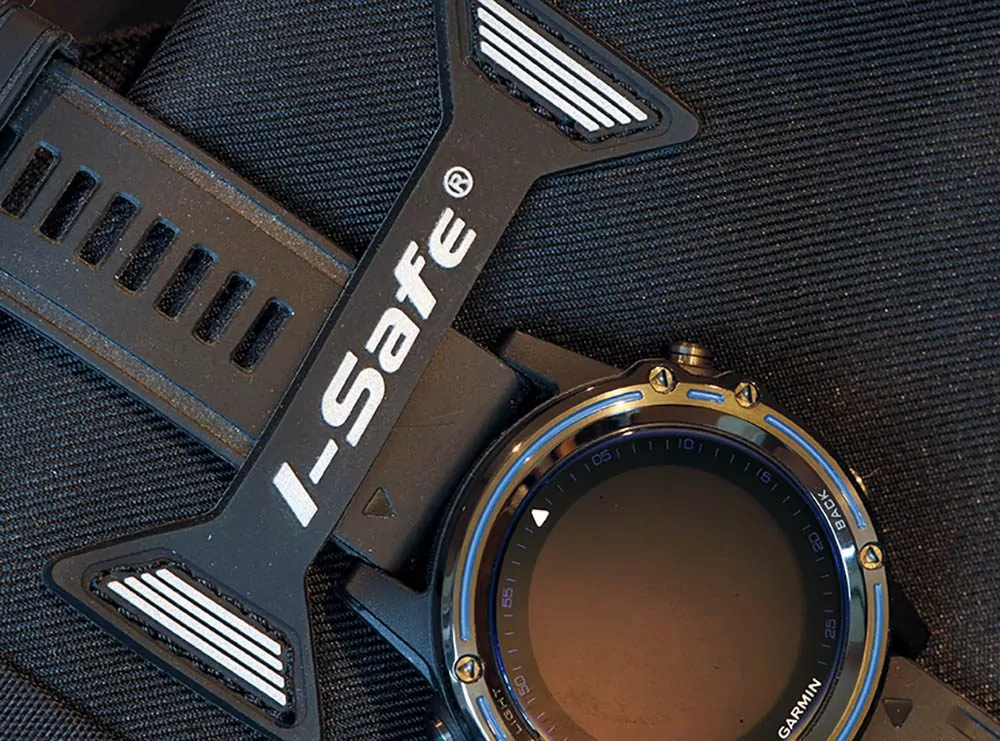
The suit was dry and comfortable. The membrane material had no stretch so far as I could tell, but the telescopic torso combined with an elasticated panel in the back of the suit at waist-level kept the fit good and still allowed for ease of movement topside and under water, at the expense of a bit more internal volume.
Fitting fins and reaching valves was easy, and the suit felt lightweight and easy to wear, despite its robust construction.
Website: SCUBAPRO
Santi E.Motion Plus – 4.2kg, £1500
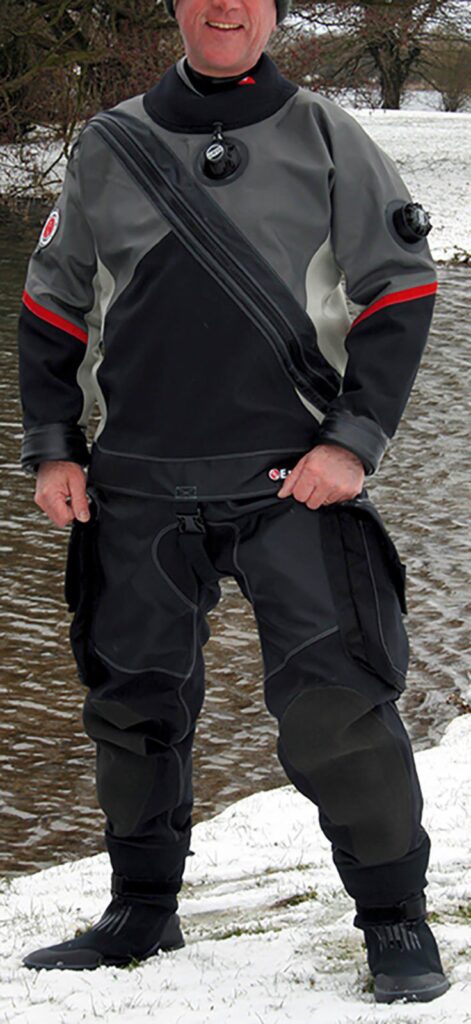
Polish company Santi has a product range that deserves to be better known in the UK. It efficiently arranged for an E.Motion Plus, the first suit to emerge from a collaboration between Santi and Halcyon, to be shipped over, and the moment I opened the box the scent of quality blossomed out.
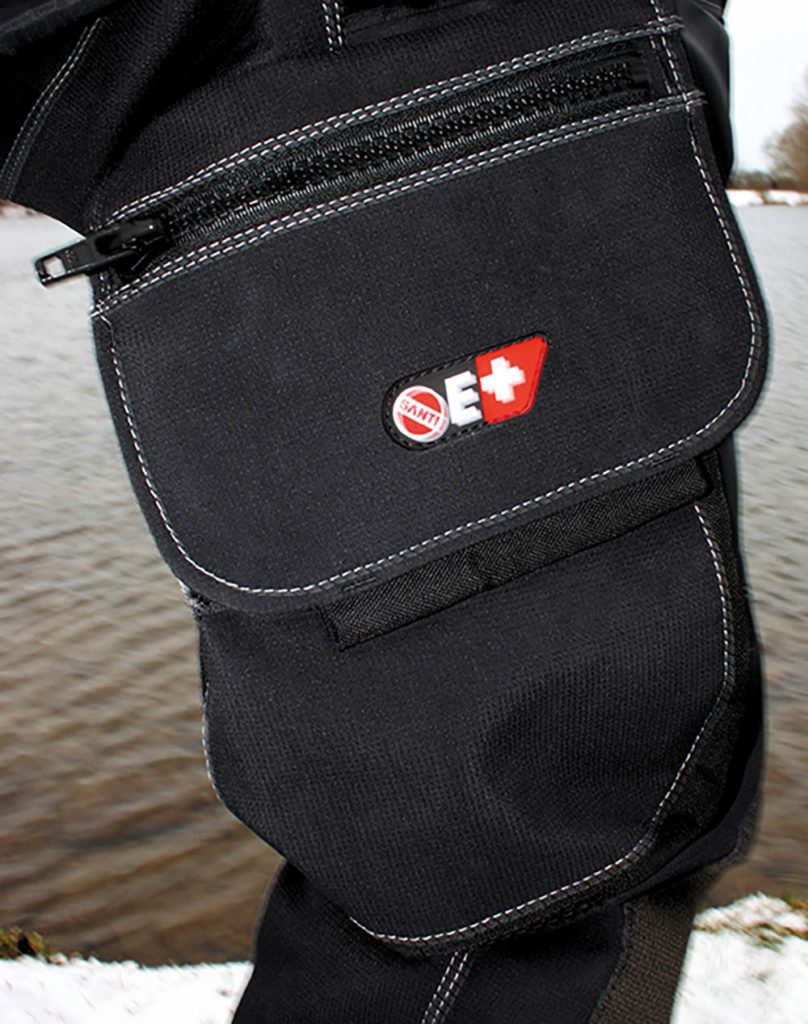
This rugged front-zip membrane suit came in a combination of black with light grey (sorry, silver) panels and red highlights.
The neck-seal is latex with a well-fitted warm neoprene collar stretchy enough to shove your head through without needing any tabs to hold it closed when you put the suit on. Wrist-seals are also latex, and fitted using Santi’s easy-change system, which makes replacing a torn seal easy-peasy.
The auto-dump valve is situated on the left upper arm and branded Santi. It’s a relatively narrow-diameter and high-profile unit. The inlet valve is also Santi branded, a standard press-to-inject unit that’s offset a bit to clear the front zip.
The plastic zipper goes from right shoulder to left hip. It has an easily grasped T-handle and a protective zipped flap to cover it in use. Both the waterproof zip proper and the protective outer zip are easily reached and easy to pull for the full length of their travel.
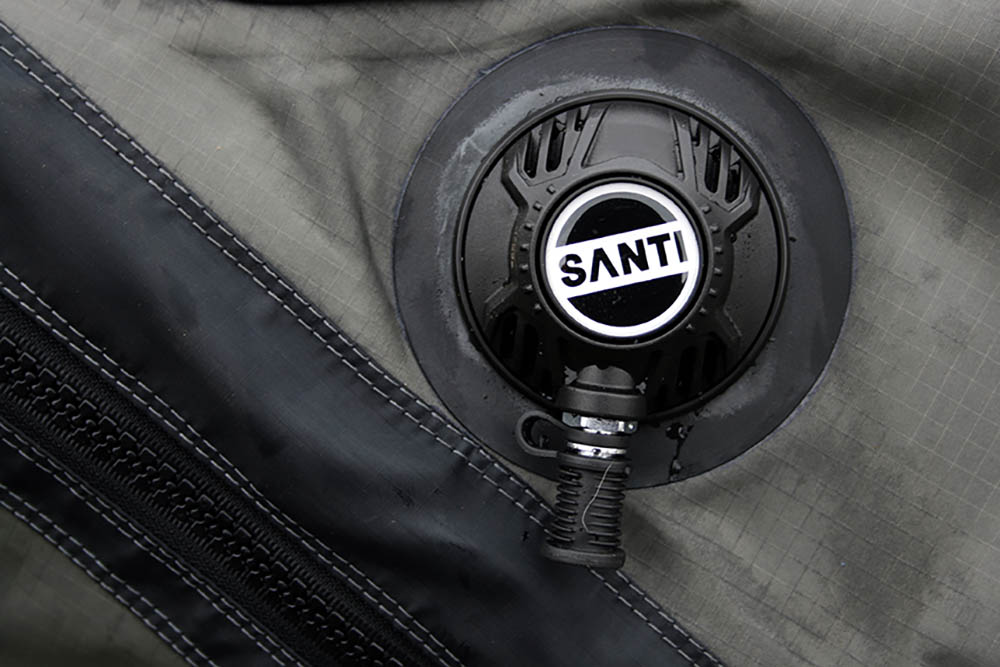
In common with most front-zip suits, the torso is over-long and telescopic, so you don the suit then pull it down all the way around and secure with a crotch-strap, a process facilitated by the internal braces that hold the bottom of the suit firmly in place.
The large cargo-pockets on each hip have additional pockets in the Velcro closed-over flaps. Either would happily accommodate a DSMB and finger-spool.
The left main pocket is even sub-divided into two sections. Extra length in the flap hangs below the Velcro, so you have something to grab to open the pocket easily.
Big pads cover the knees, and the conventional drysuit boots are complemented by a Velcro-secured ankle-strap, just in case.
The suit left me dry – in fact the neck-seal was so dry that it promised to be terminal, but that’s easily resolved, not a criticism. Enlarging a latex neck-seal is not a problem. Comfortable? Yes, in and out of the briny. It’s the mutt’s.
Website: SANTI Diving
Drysuits: Summary & Comparison
TIME TO SORT THE WHEAT from the chaff, get off the fence and tell it like it is. Not that any of these suits could be described as chaff. All provide a watertight bag of air in which to dive, but do the job in different ways. You could buy any of these suits and enjoy dry, comfortable dives.
Front-entry membranes
Starting with the three front-entry contenders, the Scubapro Definition, BARE Aquatrek and Santi E.Motion Plus, all three were easy to put on up to the zip-closing part, when I found the Scubapro’s zip hard to reach at the top end and harder to pull totally closed at the bottom of the travel.
This was partly because the protective Velcro flap at the closed end of the zip gets in the way.
The Santi and Bare zips were easy, though a last tug was needed to get them fully closed. There’s a distinctive feel to the last bit that you quickly get used to – because if you don’t, hello wet crotch.
Out of the water the Bare felt the most comfortable of the three, probably because it was the lightest of any of these suits, but all three were fine to walk around in, and made kitting-up easy.
In the water the differences were minimal. If you could somehow kit me up while I was asleep and drop me blindfold into the water I’d have no idea which I was wearing – apart from the Scubapro having a vented hood that worked brilliantly, the best of any on test.
I’d have to remove the suicide-clips from the back of the hood and the pocket before using the suit if a DSMB might be involved, however.
I’d be very happy to use the BARE Aquatrek for most UK diving, and be tempted to give up wetsuits abroad. It was much easier to get into than any wetsuit, especially for the second and subsequent dives, and far more versatile.
My only hesitation would be for serious wreck-diving – I know that the material is far tougher than the light weight would suggest, but I’d still worry about snagging it on rusty metal, especially in UK vis when you’ve not quite hit slack.
The very nice Santi combines more toughness than the Scubapro with the simpler style of the Bare, and if the money tree was in fruit I’d be very happy to own one.
Back-entry membranes
Which brings us to the RoHo X-Flex and Otter Hammerhead, both conventional back-entry suits, and ignoring the material and colour differences very similar to use. They even have the same welly-style boots.
The RoHo has Velcro adjustable cuffs, an extra-cost option I really don’t understand, and one of those split warm collars, but the Otter has that off-centre inflation-valve that didn’t quite catch on my kit out of the water but did a bit in the water. Ultimately I’d take either of these suits and spend more time worrying about my choice of undersuit.
Neoprenes
If you thought the choice between the membrane suits was close, you’ve seen nothing yet. Let’s start on the neoprenes with the O’Three MSF500. Even with a slightly rough undersuit the legs slid easily into place and were straightforward to pull up.
The neoprene wrist-seals seemed a little longer than some and needed a good pull to get them settled in place. Lube rather than talc helped.
The neck-seal was easy to roll inward and comfortable in place and the suit as a whole felt good to wear.
The Northern Diver Divemaster wasn’t as easy to pull up over my legs, but the wrist-seals slid into place very well. Perhaps their size and shape suits the size and shape of my forearms a bit better.
The neck-seal rolled inward very easily, too, and the whole suit felt good. Compared directly with the other neoprene suits here it felt a wee bit stiffer, but it took no more than 20 seconds before I stopped noticing.
The SEAC WarmDry fitted like the O’Three, easy in, with slightly balky cuffs but a very nice neck-seal, easily reached to tuck inward.
The overall feel was good, with the sort of gentle whole-body hug common with neoprene drysuits – proper grand.
The Seaskin Ultra was a bit harder to pull up around the legs but easy on the wrists, possibly because the cuffs on the suit were thinner neoprene. It seemed a bit stretchier than the other neoprene suits as well, perhaps because the neoprene used is that bit thinner, and the suit is very easy to wear for long periods of time.
Under water, there was nothing to choose between the suits except that the dump-valve on the SEAC was a bit further to the front of my arm than on the other suits, so it took a more definite roll to vent gas.
If you dive in a solid horizontal trim you might need to think a bit more about dumping gas from your suit on ascent, but that’s about it.
Of all nine suits none was better made or demonstrated better attention to detail in the design than the O’Three.
Just as an example, the neoprene flap over the inside of the inflation-valve on most of the suits is usually a piece of cut neoprene, but on the MSF500 it’s a curvy four-pointed star with printing that’s clearly been designed for the job.
However, I can’t point to anything that the SEAC WarmDry is lacking in the real world, or anything that makes it less good than the O’Three – it’s a fine suit.
And the Northern Diver is an updated classic in which I felt as much at home as if I’d been diving it forever. It’s as close as any modern suit to the 4mm compressed neoprene one I bought from ND 30 years ago and dived for the next 20 years and that I love to bits.
Which leaves just the bargain-basement Seaskin, and I’ll confess that my own current suit is a Seaskin, bought on price and word-of-mouth recommendation.
The first time I wore it I was asked what I thought of my new O’Three, so clearly there’s some similarity in looks. Mine is eight years and 500 dives old.
Best neoprene suit? Whichever you can afford: I wouldn’t turn up my nose at any of them.
Final verdict
There were two stand-out suits in the test – the Seaskin in terms of price, as it’s the obvious budget buy and the BARE Aquatrek is an ideal travel suit. But after that you can relax and go for what you fancy and can afford, safe in the knowledge that we’ve never had it so good.
